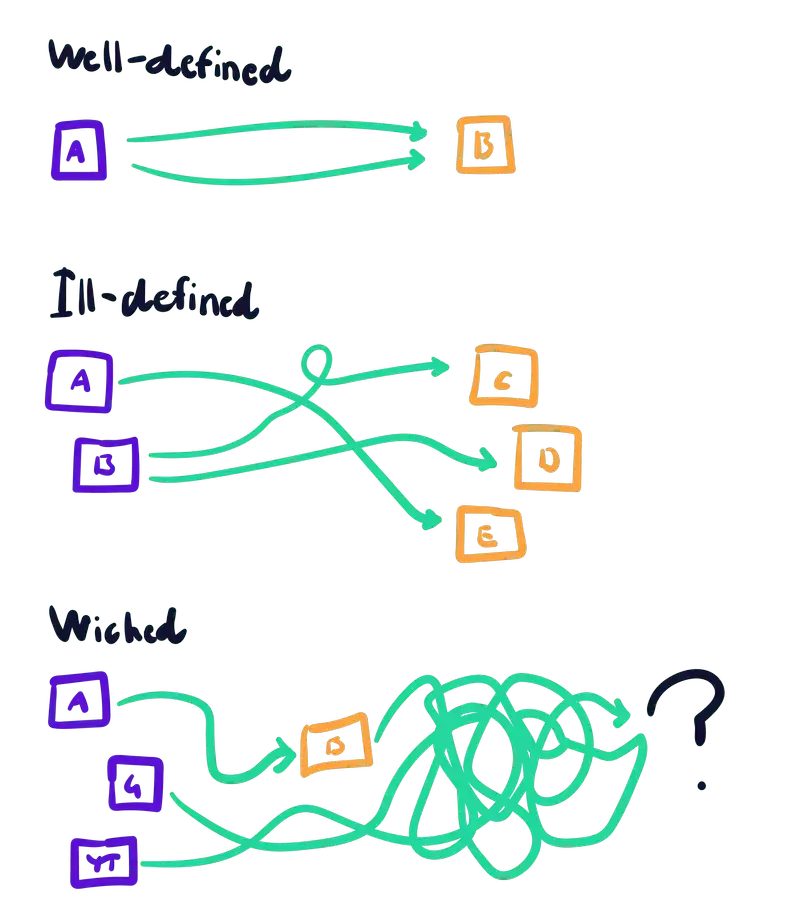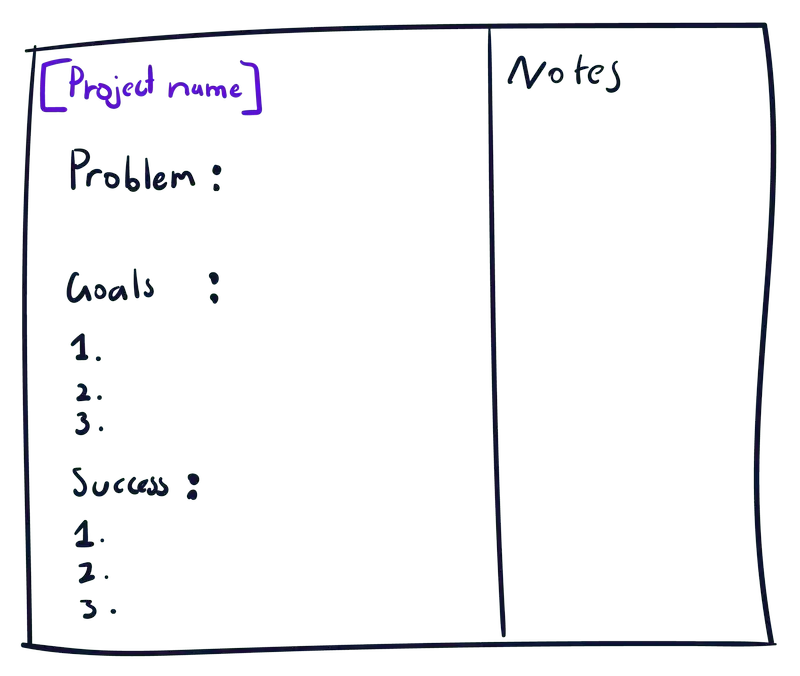Stage
Understand/ Brief
Suggested time
30-60mins or more if required
Participants
Key stakeholders for problem
Scoping team
Facilitator
How to run:
The first step in starting a new project is ensuring the entire team understands what problem they are trying to solve.
- Define the Problems statement (How can we…)
- Set goals you want to achieve with the solution
- Define what a successful solution will do

Description
&
All projects start at the same point. Whether it be a new (Greenfields), or legacy (Brownfields), or old project, they all start with a problem the business is trying to solve. The first step in successfully delivering a project is ensuring that everyone on the team understands what the problem is they are trying to solve. Only then can they come up with solutions that will have positive impact on business.
Most businesses will have long term or over-arching problems they want to solve. During this activity we are going to focus on just solving the first one. Make note of the larger ones, but we only work on one at a time and the smaller they are, the easier it is to solve quickly and see results.
There are four steps to defining the problem for a product.
- Stage of the problem
- Type of problem
- Create a statement
- Goals & success
Stage of a problem
Every business and every problem is different. There is no one-size-its-all way to define what that is going to be. This activity focuses on narrowing it down as much as possible so that we all can have a singular direction to explore. The first step is to work out how far along the business is with a possible answer to the problem.
This can normally be broken down into 3 stages :

- Identified
- Explored
- Focused
A problem in the first stage is simply when a business has identified they are facing this problem and are unsure of where to go next. They may have a few ideas or things they are toying with, but nothing concrete.
Problems that have progressed beyond this, are in the explored stage. These problems have been identified and solutions have already been tested either, previously or in preparation. They may not be concrete or may still need testing, but they have the backing of the business and are the of the directions they want to go in.
The final stage is a problem that has been focused into a solution. At this point the business is fairly certain in the direction they want to take. They have normally tested or previously worked on this solution and know how it is going to solve their problem.
Knowing where the problem is up to will help the team better understand how to procced. This part of the activity is normally discovered as the key stakeholders explain where they are up to and what they are hoping the team can build for them.
Every business and every problem is different. There is no one-size-its-all way to define what the problem is going to be. This activity focuses on narrowing it down as much as possible, so that we all can have a singular direction to explore. The first step is to work out how far along the business is with a possible answer to the problem.
Types of problems
Problems come in three types. It is the teams job to try and understand what type of problem it is and help define it.

- Well-defined
- Ill-define
- Wicked
A well-defined problem is one that is very precise and focused. The whole team can understand the problem right away and there is normally a pretty obvious solution to it. The ways in which you go about reaching it however, are what we discover. A good, well-defined problem has the whole team and stakeholder in agreeance that this is the one thing they need to solve right now. An example might be: “How do I capture users email addresses early?”
An Ill-defined problem is one that is a is a little higher concept and harder grasp. Many on the team can see different types of solutions and even different meanings behind the problem. These problems normally have many different routes to finding a solution and the team has to be careful they are solving the right path. An example might be: “How do I get more people to sign up to my site?”
A wicked problem is one that is so high level and abstract, no one knows where to start. These problems can have so many different meanings, and solutions are far beyond it at this stage. When a problem is defined as wicked, then the team may need to spend the scope digging down and investigating why the problem is a problem; helping to unpack the issues the business is dealing with. Then they can define a better solution. An example might be: “How do I stop losing users?”
Method
Create a statement
The first part of the session is getting up in front of the white board and laying out the statement. Divide the whiteboard in half. One side will be for notes and the other side you’ll write these three headings: Problem statement, Goals, Success.

Listen to what the stakeholders are saying about their business and what they need help with. Let them explain before you start asking questions. Maybe interject if you need additional clarification on something. As they talk you’ll begin to get a sense of what the problem is they are facing.
Start a dialog with them as you define their problem back to them. Keep asking questions and getting their opinion on what you write on the whiteboard. Always be asking if everyone understands and agrees that this is the problem they want to solve. Once everyone is in agreeance then you know that the team can be focused on solving that.
Digging deeper
Not every business knows what the problem is going to be, or are in agreeance that it is the right way to define it. As discussed before, the problems may fall into different types. This is the part where you help define it between types; i.e. moving ill-defined into well defined, or polishing off well-defined ones into ones everyone agrees on.
To help define the problem, you can move the discussion two ways: up or down. Asking “Why?” that is a problem or why they do something the way they do, will help uncover the crux of the matter. Normally, five whys is enough to uncover a deeper issue which may be something you can solve. Or if the problem is too narrow and doesn’t solve any real issues, try asking “how?”, that will help to expand the problem upwards.
Goals & success
Once everyone is in agreeance on what the problem is they are going to solve, then it is time to work out what will happen once we solve the problem. Here we set some goals to use as metrics to let us know we are successfully solving it. These goals are ones the business sets as things they want to achieve. You can go as precise or as high level as the business wants.
Once you set the goals you want to achieve, then you set what success looks like when they have been hit. This criteria helps the team understand what they need to be striving for when they come up with solutions. Ensure both the success and goals are manageable and achievable. Keep them focused on just this problem.
With all of this on the whiteboard, go over it again and show the stakeholders you understand their problem, goals, and success means to them. Let them tweak it until they are happy, then draw a line in the sand. Everyone needs to understand that these may change during scoping as the problem is unpacked more, but each time it does, everyone needs to agree on what it changes into, and that it may take additional time to scope if the problem statement changes too dramatically.




